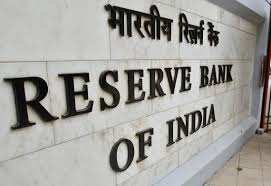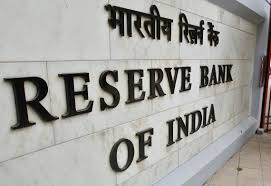
Eschewing the market's expectation for a cut as the new demonetization policy continues to play out, India's central bank stood pat on interest rates.
As India has faced a cash crunch, the view that the Reserve Bank of India (RBI) would keep its main policy rate unchanged at 6.25 percent was held by only 18 of 56 analysts surveyed by Reuters.
India's cash-dependent economy has been disrupted by the sucking out of a combined 86 percent of currency in circulation by a controversial plan from Prime Minister Narendra Modi's government to swap all 500 and 1,000 rupee notes with new notes and it has produced a nation-wide cash crunch amid a limited stock of script.
Several analysts, despite expecting a rate cut, said standing pat may prove "prudent."
"It's a very difficult time for the RBI because there are conflicting signals coming from different parts of the economy," Eswar Prasad, senior professor of trade policy at Cornell University, told CNBC's "The Rundown" on Thursday.
"On the one hand, the demonetization experiment does look like it might have a negative effect on growth in the short run," Prasad said. "But at the same time all the money flooding into the banks right now as people clean out their closets of their cash holdings does pose some risks for inflationary pressures."
Analysts noted that the RBI had other inflation concerns.
Compared with 4.20 percent on-month in October, The RBI kept its forecast for consumer price inflation of 5 percent at the end of March, which is the end of its fiscal year and it is still in line with the RBI's target of within two percentage points of 6 percent.
Citing the central bank's comments that it was concerned headline inflation may hit a floor on sticky core prices, the RBI appeared to have turned more hawkish on inflation, noted Shilan Shah and Mark Williams, economists at Capital Economics.
"We have been arguing for some time that inflation was unlikely to fall much further and that this would become a problem for policymakers given how close inflation currently is to the RBI's targets," Capital Economics' Shah and Williams said in a note.
They noted that global oil prices have begun to reverse their long decline.
But as demonetization may not be as transient as the RBI forecasts and may instead have damaged economic activity, the two said the RBI may have made a "misstep".
Cutting its gross domestic product (GDP) growth forecast for the fiscal year through March to 7.1 percent from 7.6 percent, the central bank incorporated demonetization into its forecasts.
Demonetization has been widely expected to dent economic growth in the short term.
As cash is removed from the system and with a daily limit on the amount of old notes that can be exchanged, consumers are holding off from spending as a result of the program. The frugal mood can have weighty economic consequences as private consumption accounts for a whopping 60 percent of GDP.
"We expect the RBI to deliver a final 25 basis point repo rate cut in February after the budget, and then stay on hold throughout 2017," Nomura said in a note on Wednesday.
"There are growing signs that underlying inflation is unlikely to fall further given stabilizing rural wages and higher minimum support prices. Commodity prices have also risen," it said. "Given our inflation forecast, we expect real interest rates to compress next year and therefore there is not much room for further accommodation."
Morgan Stanley agreed.
"The rise in oil prices, U.S. rates and stickiness in core inflation means that we appear to be nearing the end of the easing cycle," Morgan Stanley said in a note on Wednesday.
(Source:www.cnbc.com)
As India has faced a cash crunch, the view that the Reserve Bank of India (RBI) would keep its main policy rate unchanged at 6.25 percent was held by only 18 of 56 analysts surveyed by Reuters.
India's cash-dependent economy has been disrupted by the sucking out of a combined 86 percent of currency in circulation by a controversial plan from Prime Minister Narendra Modi's government to swap all 500 and 1,000 rupee notes with new notes and it has produced a nation-wide cash crunch amid a limited stock of script.
Several analysts, despite expecting a rate cut, said standing pat may prove "prudent."
"It's a very difficult time for the RBI because there are conflicting signals coming from different parts of the economy," Eswar Prasad, senior professor of trade policy at Cornell University, told CNBC's "The Rundown" on Thursday.
"On the one hand, the demonetization experiment does look like it might have a negative effect on growth in the short run," Prasad said. "But at the same time all the money flooding into the banks right now as people clean out their closets of their cash holdings does pose some risks for inflationary pressures."
Analysts noted that the RBI had other inflation concerns.
Compared with 4.20 percent on-month in October, The RBI kept its forecast for consumer price inflation of 5 percent at the end of March, which is the end of its fiscal year and it is still in line with the RBI's target of within two percentage points of 6 percent.
Citing the central bank's comments that it was concerned headline inflation may hit a floor on sticky core prices, the RBI appeared to have turned more hawkish on inflation, noted Shilan Shah and Mark Williams, economists at Capital Economics.
"We have been arguing for some time that inflation was unlikely to fall much further and that this would become a problem for policymakers given how close inflation currently is to the RBI's targets," Capital Economics' Shah and Williams said in a note.
They noted that global oil prices have begun to reverse their long decline.
But as demonetization may not be as transient as the RBI forecasts and may instead have damaged economic activity, the two said the RBI may have made a "misstep".
Cutting its gross domestic product (GDP) growth forecast for the fiscal year through March to 7.1 percent from 7.6 percent, the central bank incorporated demonetization into its forecasts.
Demonetization has been widely expected to dent economic growth in the short term.
As cash is removed from the system and with a daily limit on the amount of old notes that can be exchanged, consumers are holding off from spending as a result of the program. The frugal mood can have weighty economic consequences as private consumption accounts for a whopping 60 percent of GDP.
"We expect the RBI to deliver a final 25 basis point repo rate cut in February after the budget, and then stay on hold throughout 2017," Nomura said in a note on Wednesday.
"There are growing signs that underlying inflation is unlikely to fall further given stabilizing rural wages and higher minimum support prices. Commodity prices have also risen," it said. "Given our inflation forecast, we expect real interest rates to compress next year and therefore there is not much room for further accommodation."
Morgan Stanley agreed.
"The rise in oil prices, U.S. rates and stickiness in core inflation means that we appear to be nearing the end of the easing cycle," Morgan Stanley said in a note on Wednesday.
(Source:www.cnbc.com)














